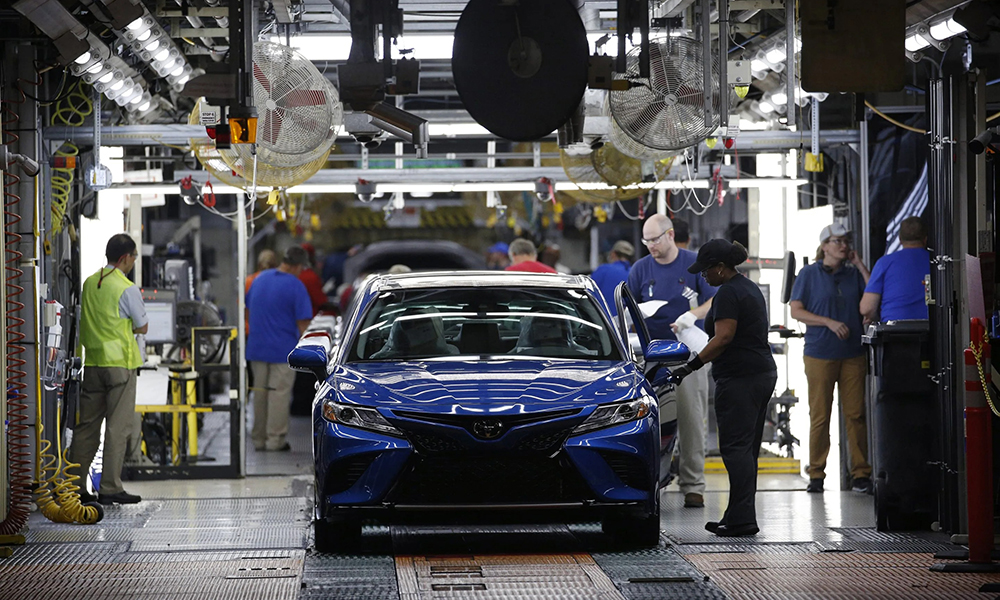
大多数美国首席执行官预计经济衰退即将到来,在世界大型企业联合会(Conference Board)开展的调查中,98%的受调对象均有此看法。作为应对举措,他们未雨绸缪,寻找各种能够节流的领域,其中一个便是人才。
有人估计,2023年,美国有超过5.8万名科技公司员工成为了裁员对象,这还只是一个行业的数据。几乎可以肯定的是,受从众效应、2021年过度招聘的纠正,以及企业高管不景气经济预期的影响,未来将出现更大规模的裁员潮。不过,裁员是解决企业财务问题的正确方式吗?
相关数据显示情况并非如此。然而,随着这一趋势的发展,那些正在考虑裁员的首席执行官不妨认真了解一下有关裁员令人惊讶的真相。研究显示,预期的效益通常是海市蜃楼,而其成本要比管理者们意识到的要高得多。
不菲的裁员成本
从一开始,裁员的成本就不便宜。在裁员给老板省钱之前,老板得先花上一大笔。例如,微软(Microsoft)宣布从收入中拿出12亿美元的费用,以支付裁员的直接成本,包括遣散费、福利延期、应计假期和其他可能在合同中约定的成本,相当于每位被裁雇员12万美元。
经济环境是周期性的,而且雇主通常会在下行时期结束时重新填补空缺岗位。如此之做会耗费更多的时间和资金,因为新雇员在成为生产力之前需要进行入职培训和其他培训。考虑到所有这些成本,裁员可能并不省钱。咨询公司贝恩(Bain & Company)的研究显示:“裁员的成本可能会超过收益。”尤其是在衰退持续时间短、程度温和时更是如此,而这正是很多经济学家预计的美国今年的衰退模式。
一些公司为自身在过去经济下行期的所做作为付出了惨痛代价。在大衰退拉开帷幕之时,美国西北航空公司(Northwest Airlines)裁掉了数百名飞行员。当业务恢复时,公司未能快速招聘到飞行员,并因航班取消损失了数千万美元的收入。
知识的丢失
当被裁的员工离开公司时,其掌握的宝贵知识也会随之而去。这一点很难量化,然而,如果没有雇员所掌握的不成文制度性操作知识,各大公司就无法在这个知识经济时代以最佳的状态运营,而且大多数被裁的员工不会再回到公司。其破坏力可能比管理者预计的更广泛。研究员对《管理学习》(Management Learning)上发表的相关文献进行对比调查后表示:“裁员不仅会破坏个人和社交网络层面的宝贵机构知识,同时还可能极大地扰乱已有流程、惯例和机构文化。这些较为间接的影响会造成严重的长期后果。”
业绩下滑
公司的生产力在裁员之前、期间和之后都会有所下降,最终损害盈利能力。焦虑、谣言和虚假信息将激增。那些留下来的员工思考的更多的是他们自己而不是公司,而且他们在八卦和准备简历方面所花费的时间将飙升。在分析了多项研究之后,来自于科罗拉多大学(University of Colorado)、波兰大学(University of Portland)和德州农工大学(Texas A&M)的研究人员认为裁员的成本还包括“留存员工生产力的下降。”说到更具体的数字,美国心理学协会(American Psychological Association)发布的研究显示,裁员之后,那些留存人员的工作业绩下滑了20%。
继任计划脱轨
管理层的接替人才管线会受到拖累,尤其在大规模裁员的情况下,因为它会减少机构未来的智力资本(intellectual capital)。在上个世纪80年代经济衰退期间裁掉了数万名员工(大多数都是入职不久的员工)之后,银行和电气设施出现了管理层断层问题。20年后,这些公司为此付出了代价,当时,它们需要有经验、见多识广的高管来继任即将退休的老一代高管,但发现这些层级中大量的职位都是空的。
留存员工也将受累
信诺(Cigna)与美国管理协会(American Management Association)开展的一项调查显示,在裁员之后,留存雇员请病假的次数大幅增加,原因多为精神健康、药物滥用和心血管问题。斯坦福大学(Stanford University)研究员在研究了多项调查之后指出,造成岗位不安全感的举措,例如精简或大规模裁员通常会伴随“留存员工健康恶化”问题。那些负责裁员的人也未能幸免于难。来自于45家美国医院的研究显示,经理们在裁员之后一周内出现心脏病的概率会增加一倍。
华尔街或将闻风而动
贝恩公司的一份报告显示,如果公司因大型战略重组或合并而裁员,那么投资者可能会推高股价。然而,如果裁员只是为了削减成本,嗅到问题的华尔街通常会做空公司股票。当孩之宝(Hasbro)在1月底宣布将裁员1000名员工时,公司股价下跌了9%。
诚然,一旦出现突如其来的严重经济冲击,例如百年一遇的全球疫情,裁员可能无法避免。然而即便在极端环境下,企业管理者不妨考虑一下裁员是否真的是无可避免。一些大型公司在70多年的时间中拒绝进行任何大规模裁员,包括在疫情期间也是如此,而且不断发展壮大。丰田在2008-2009年的萧条期间并未裁员,不过,通用汽车(General Motors)、福特汽车(Ford Motor)和克莱斯勒(Chrysler)当时裁掉了数万名员工。总部位于俄亥俄州的焊接设备制造商林肯电气(Lincoln Electric)在至少75年的时间内没有进行过裁员,该公司的工厂遍布全球,其股价最近正在向历史最高位迈进。
当进入困难时期而且新一季度的营收前景惨淡时,裁员是一个十分有诱惑力的举措。然而,裁员可能会变成急功近利的陷阱。有鉴于更多的首席执行官开始考虑裁减其员工,他们必然会质疑,如果从大局出发,始终不裁员的这些企业案例真的行得通吗?(财富中文网)
译者:冯丰
审校:夏林
大多数美国首席执行官预计经济衰退即将到来,在世界大型企业联合会(Conference Board)开展的调查中,98%的受调对象均有此看法。作为应对举措,他们未雨绸缪,寻找各种能够节流的领域,其中一个便是人才。
有人估计,2023年,美国有超过5.8万名科技公司员工成为了裁员对象,这还只是一个行业的数据。几乎可以肯定的是,受从众效应、2021年过度招聘的纠正,以及企业高管不景气经济预期的影响,未来将出现更大规模的裁员潮。不过,裁员是解决企业财务问题的正确方式吗?
相关数据显示情况并非如此。然而,随着这一趋势的发展,那些正在考虑裁员的首席执行官不妨认真了解一下有关裁员令人惊讶的真相。研究显示,预期的效益通常是海市蜃楼,而其成本要比管理者们意识到的要高得多。
不菲的裁员成本
从一开始,裁员的成本就不便宜。在裁员给老板省钱之前,老板得先花上一大笔。例如,微软(Microsoft)宣布从收入中拿出12亿美元的费用,以支付裁员的直接成本,包括遣散费、福利延期、应计假期和其他可能在合同中约定的成本,相当于每位被裁雇员12万美元。
经济环境是周期性的,而且雇主通常会在下行时期结束时重新填补空缺岗位。如此之做会耗费更多的时间和资金,因为新雇员在成为生产力之前需要进行入职培训和其他培训。考虑到所有这些成本,裁员可能并不省钱。咨询公司贝恩(Bain & Company)的研究显示:“裁员的成本可能会超过收益。”尤其是在衰退持续时间短、程度温和时更是如此,而这正是很多经济学家预计的美国今年的衰退模式。
一些公司为自身在过去经济下行期的所做作为付出了惨痛代价。在大衰退拉开帷幕之时,美国西北航空公司(Northwest Airlines)裁掉了数百名飞行员。当业务恢复时,公司未能快速招聘到飞行员,并因航班取消损失了数千万美元的收入。
知识的丢失
当被裁的员工离开公司时,其掌握的宝贵知识也会随之而去。这一点很难量化,然而,如果没有雇员所掌握的不成文制度性操作知识,各大公司就无法在这个知识经济时代以最佳的状态运营,而且大多数被裁的员工不会再回到公司。其破坏力可能比管理者预计的更广泛。研究员对《管理学习》(Management Learning)上发表的相关文献进行对比调查后表示:“裁员不仅会破坏个人和社交网络层面的宝贵机构知识,同时还可能极大地扰乱已有流程、惯例和机构文化。这些较为间接的影响会造成严重的长期后果。”
业绩下滑
公司的生产力在裁员之前、期间和之后都会有所下降,最终损害盈利能力。焦虑、谣言和虚假信息将激增。那些留下来的员工思考的更多的是他们自己而不是公司,而且他们在八卦和准备简历方面所花费的时间将飙升。在分析了多项研究之后,来自于科罗拉多大学(University of Colorado)、波兰大学(University of Portland)和德州农工大学(Texas A&M)的研究人员认为裁员的成本还包括“留存员工生产力的下降。”说到更具体的数字,美国心理学协会(American Psychological Association)发布的研究显示,裁员之后,那些留存人员的工作业绩下滑了20%。
继任计划脱轨
管理层的接替人才管线会受到拖累,尤其在大规模裁员的情况下,因为它会减少机构未来的智力资本(intellectual capital)。在上个世纪80年代经济衰退期间裁掉了数万名员工(大多数都是入职不久的员工)之后,银行和电气设施出现了管理层断层问题。20年后,这些公司为此付出了代价,当时,它们需要有经验、见多识广的高管来继任即将退休的老一代高管,但发现这些层级中大量的职位都是空的。
留存员工也将受累
信诺(Cigna)与美国管理协会(American Management Association)开展的一项调查显示,在裁员之后,留存雇员请病假的次数大幅增加,原因多为精神健康、药物滥用和心血管问题。斯坦福大学(Stanford University)研究员在研究了多项调查之后指出,造成岗位不安全感的举措,例如精简或大规模裁员通常会伴随“留存员工健康恶化”问题。那些负责裁员的人也未能幸免于难。来自于45家美国医院的研究显示,经理们在裁员之后一周内出现心脏病的概率会增加一倍。
华尔街或将闻风而动
贝恩公司的一份报告显示,如果公司因大型战略重组或合并而裁员,那么投资者可能会推高股价。然而,如果裁员只是为了削减成本,嗅到问题的华尔街通常会做空公司股票。当孩之宝(Hasbro)在1月底宣布将裁员1000名员工时,公司股价下跌了9%。
诚然,一旦出现突如其来的严重经济冲击,例如百年一遇的全球疫情,裁员可能无法避免。然而即便在极端环境下,企业管理者不妨考虑一下裁员是否真的是无可避免。一些大型公司在70多年的时间中拒绝进行任何大规模裁员,包括在疫情期间也是如此,而且不断发展壮大。丰田在2008-2009年的萧条期间并未裁员,不过,通用汽车(General Motors)、福特汽车(Ford Motor)和克莱斯勒(Chrysler)当时裁掉了数万名员工。总部位于俄亥俄州的焊接设备制造商林肯电气(Lincoln Electric)在至少75年的时间内没有进行过裁员,该公司的工厂遍布全球,其股价最近正在向历史最高位迈进。
当进入困难时期而且新一季度的营收前景惨淡时,裁员是一个十分有诱惑力的举措。然而,裁员可能会变成急功近利的陷阱。有鉴于更多的首席执行官开始考虑裁减其员工,他们必然会质疑,如果从大局出发,始终不裁员的这些企业案例真的行得通吗?(财富中文网)
译者:冯丰
审校:夏林
Most U.S. CEOs expect a recession, with 98% of those surveyed by the Conference Board saying as much. In response, they’re battening down the hatches and looking for areas to cut spending. One of those areas is talent.
By some estimates, more than 58,000 workers in U.S.-based tech companies have been laid off in 2023—and that’s just from one industry. More layoffs are almost certain to come, thanks in part to the bandwagon effect, a correction to overhiring in 2021, and what leaders foresee as tough economic conditions ahead. But are layoffs the right answer financially?
The data suggests otherwise. But as this trend builds, CEOs pondering a reduction in force may want to look closely at the surprising reality of layoffs. Research shows that the anticipated benefits are often a mirage, while the costs are much greater than leaders realize.
Layoffs are costly
Layoffs are expensive from day one. And before they save an employer money, they cost a bundle. For example, Microsoft announced it would take a $1.2 billion charge to earnings to account for its layoffs’ immediate costs, including severance payments, benefit extensions, accrued vacation, and other costs that may be contractually required. That’s $120,000 per laid-off employee.
Economic conditions are cyclical, and employers often want to refill empty seats when downturns end. Doing so takes more time and money since new employees require onboarding and training before they’re fully productive. Combine all these costs, and layoffs may not save a dime. “Job losses can produce greater costs than benefits,” says research from the consulting firm Bain & Company. That’s especially true if a recession turns out to be short and mild, as many economists expect in the U.S. this year.
Some companies learned this lesson the hard way in past downturns. In the prelude to the Great Recession, Northwest Airlines fired hundreds of pilots. When business recovered, it couldn’t hire pilots fast enough and lost millions of dollars of revenue from canceled flights.
Loss of knowledge
Valuable knowledge leaves when laid-off workers exit a company. It’s impossible to quantify, but companies can’t function at their best in a knowledge-based economy without the unwritten institutional know-how employees possess. And most of what leaves won’t come back. The damage can be more extensive than leaders may expect. “Employee downsizing not only runs the risk of destroying valuable organizational knowledge on the individual and social network levels but may also profoundly disrupt established procedures, routines, and the organizational culture,” conclude researchers in a comprehensive review of the relevant literature published in Management Learning. “These more indirect effects can have severe long-term consequences.”
Performance tanks
Productivity will sag before, during, and after layoffs, ultimately hurting profitability. Anxiety, rumors, and false information will proliferate. Those who remain will think more about themselves and less about the company, and time spent gossiping and preparing résumés will mushroom. Analyzing multiple studies, researchers from the University of Colorado, University of Portland, and Texas A&M cite “decreased productivity among survivors” among the costs of employee downsizing. In more quantifiable terms, research published by the American Psychological Association found that after a layoff, the job performance of those who remained fell by 20%.
Succession plans get derailed
The leadership pipeline suffers, especially when layoffs are large, diminishing an organization’s future intellectual capital. Banks and electric utilities witnessed the drawbacks to leadership discontinuity after laying off tens of thousands of mostly junior employees during the recessions of the 1980s. Those companies paid the price 20 years later when they needed experienced, knowledgeable executives to succeed the retiring generation and found only a broad, empty space in the ranks.
Survivors suffer
A study by Cigna and the American Management Association found that employees who remain after a layoff make significantly more medical claims than before, especially for mental health, substance abuse, and cardiovascular issues. Stanford University researchers, citing multiple studies, note that measures of job insecurity such as downsizing or mass layoffs are associated with “worsened health among surviving employees.” Those doing the firing also aren’t immune. Research from 45 U.S. hospitals shows that managers are twice as likely to suffer a heart attack in the week after they fire someone.
Wall Street may react
A Bain report found that if a company lays off employees as part of a larger strategic restructuring or merger, investors may push the stock up. But if a layoff is merely cost-cutting, Wall Street senses trouble and typically sends the stock down. Hasbro stock fell 9% when the company announced in late January it was laying off 1,000 employees.
To be sure, layoffs may be unavoidable in a sudden, severe economic shock—say, a once-a-century global pandemic. But even in extremis, business leaders might want to consider whether a layoff is truly unavoidable. A few major companies have refused to make mass dismissals for 70 years or more, including during the pandemic, and have thrived. Toyota avoided laying off employees in the 2008–09 recession, even as General Motors, Ford Motor, and Chrysler dismissed tens of thousands. Lincoln Electric, a major Ohio-based maker of welding equipment with factories worldwide, hasn’t laid off employees in at least 75 years; its stock was recently near an all-time high.
Layoffs are alluring in difficult times and when the next quarter’s earnings are in peril. But that may be the short-termism trap. As more CEOs consider downsizing their workforce, it would behoove them to question whether, in the big picture, the long-term case against layoffs is more persuasive.






